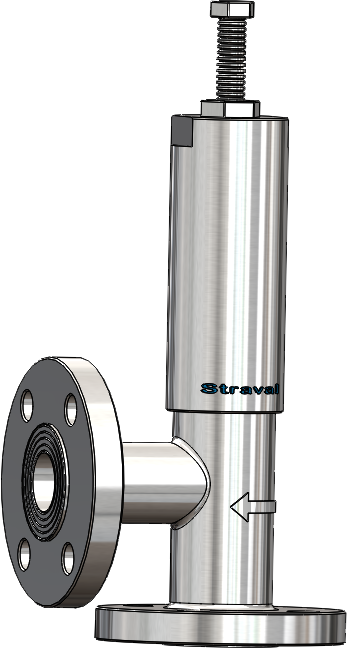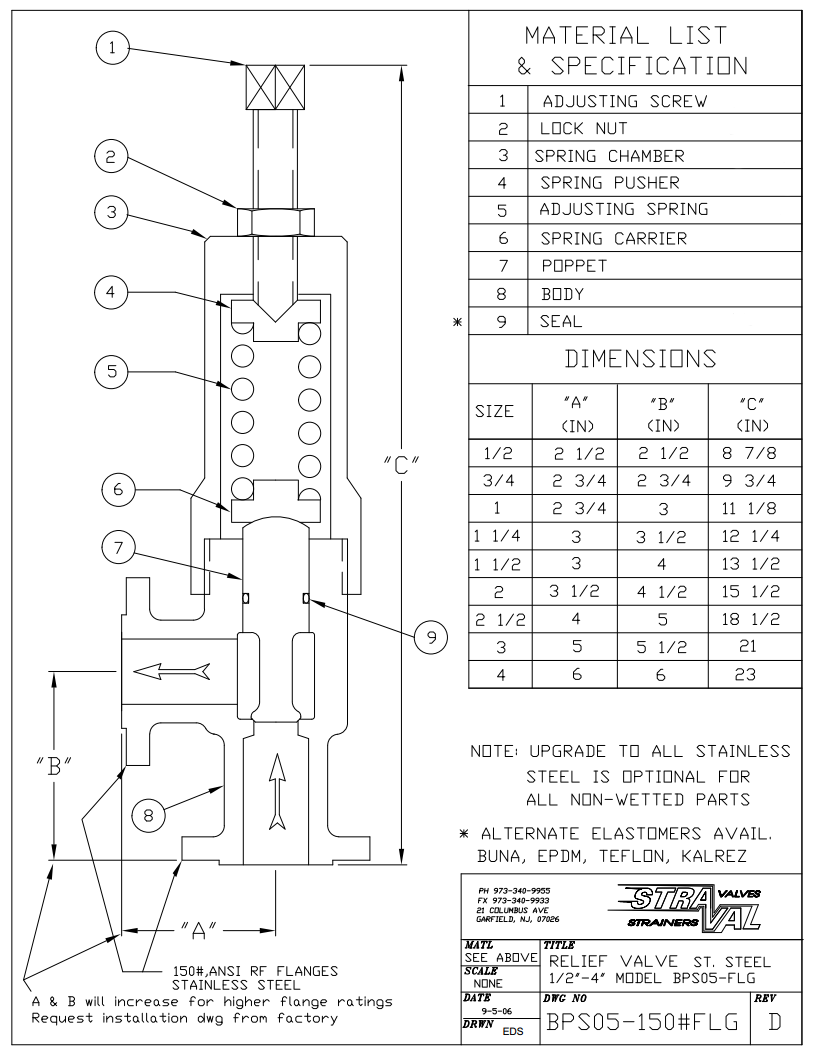Use this regulating valve for back pressure control applications such as maintaining constant pump discharge pressures, bypassing excessive pressures from various types of process equipment, and wherever a constant pressure must be maintained in a process or piping system. Valve should only be used selectively where the materials chosen are compatible with the fluid used and will not cause corrosive buildup or crystallization in the close clearances between the piston and body bore, which could keep the poppet from opening freely. Use only clean, strained (at least a #20 mesh) , or filtered liquids or gases so that the valve can operate without buildup of debris or solid matter which can cause the valve to malfunction. A Exotic Alloy strainer or filter with the appropriate perf or mesh and pressure rating can be purchased from Straval.
This particular model should only be applied where the outlet pressure is relatively low, near atmospheric pressure, except for normal piping losses. Where the outlet pressures in the discharge piping are elevated and stay elevated, reseating of the valve will take place at a much lower pressure than the original set pressure. The valve will reseat itself to its original set pressure once the outlet pressure is reduced to its original value when the valve was set. If this behavior is not acceptable, select the balanced piston model or contact Straval for one that is designed to compensate for high continuous outlet pressures. This version will cost slightly more than the standard model.
Although the valve is typically installed in the position illustrated, it can operate in any position or orientation, vertical horizontal, etc as long as it can be easily accessed for making adjustments.
These valves do not have carry the Canadian CRN or ASME approval stamp and should not be applied where this requirement must be met. However, the valves generally meet or exceed ASME design criteria with wall thicknesses that are much heavier than the minimums required.For an additional charge, valves can be ordered with material certs and with a certified hydro-test certificate and other tests to meet special documentation and acceptance requirements.
Standard metal seated valves meet ANSI/FCI Class IV seat leakage standards (0.01% of rated valve capacity, not bubble tight).
Scroll down below to select the valve size, spring range, material options in the customized pricing and ordering section indicated by the red arrows. You have the ability to customize your valve choices by selecting the wetted and nonwetted materials, and choice of seat materials to suit your shutoff requirements, using the softer seats for improved shutoff, particularly for air or gas applications where they are available at the lower pressures. Once these selections are made a price quote can be generated and printed directly to your computer or immediately e-mailed to you.
When ordering don't forget to state your desired relief set pressure if you expect the valve to relieve at only one pressure. This pressure will be engraved on the valve body. If the set pressure is not specified, the valve will be set at or below the stated spring range as selected for the order and no set pressure will be stamped on the nameplate.
This is a direct-operated poppet and spring type back pressure/bypass valve where the spring constantly opposes the pressure acting against the poppet which seals off the inlet port from the outlet port at the valve seat. The desired set pressure or relief is achieved by compressing the spring until the spring force is adequate to balance the pressure force acting against the poppet. When the inlet pressure exceeds the set pressure, the poppet will open to relieve the excess pressure. The valve will operate in a vertical orientation as illustrated, horizontal, or any other orientation. This valve can also be operated by remote pressure adjustment which can be achieved with a dome type air-loaded version. Consult factory.
These valves are not equipped with a manual lever release. However, manual override is accomplished by first locking the spring lock nut to the adjusting screw and backing it out enough to open the poppet to release pressure, and then repositioning it to its original preset locked condition without losing the original set pressure. This procedure is recommended periodically to flush the seat and to check for proper opening of the valve piston.





















































































